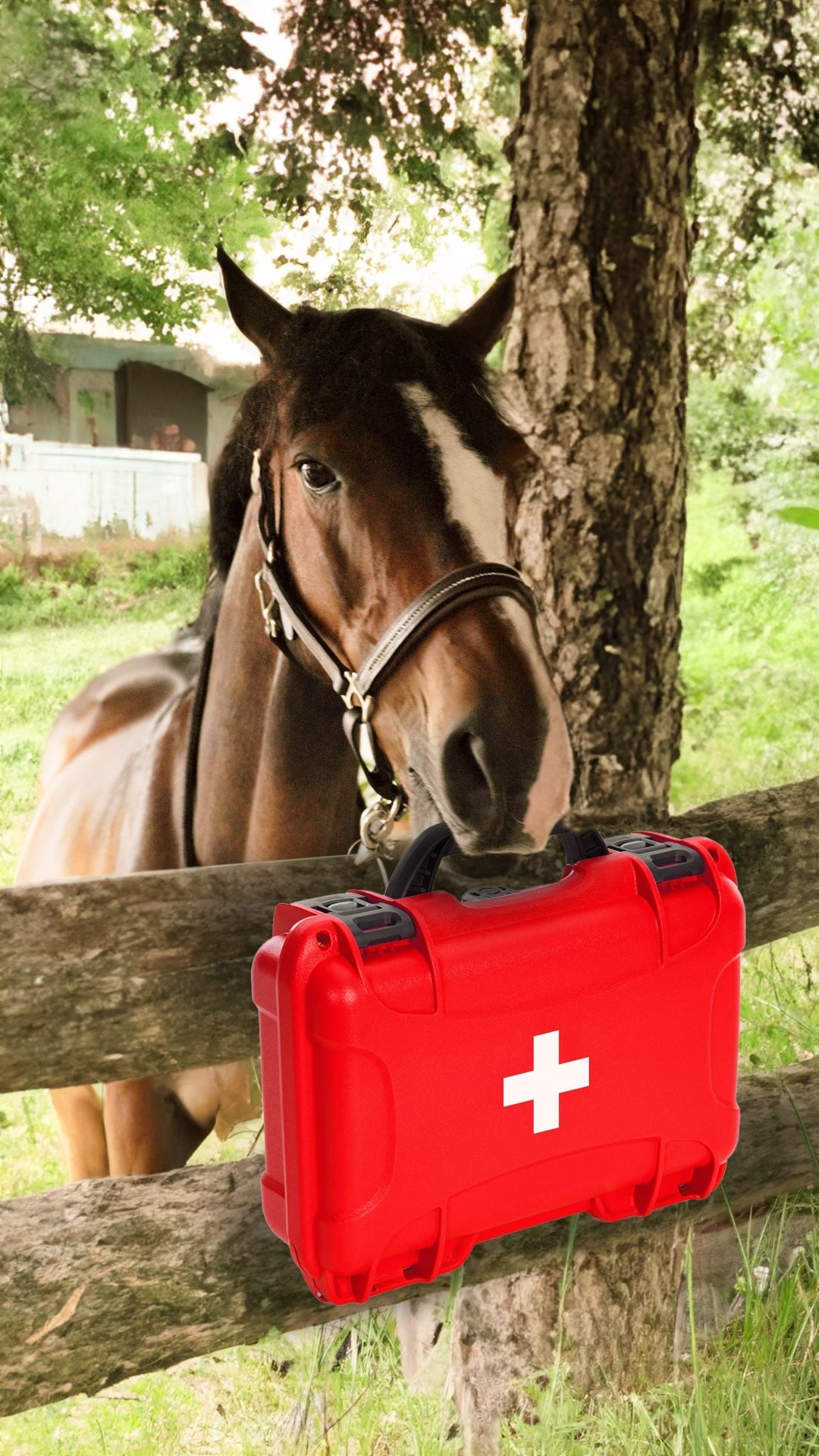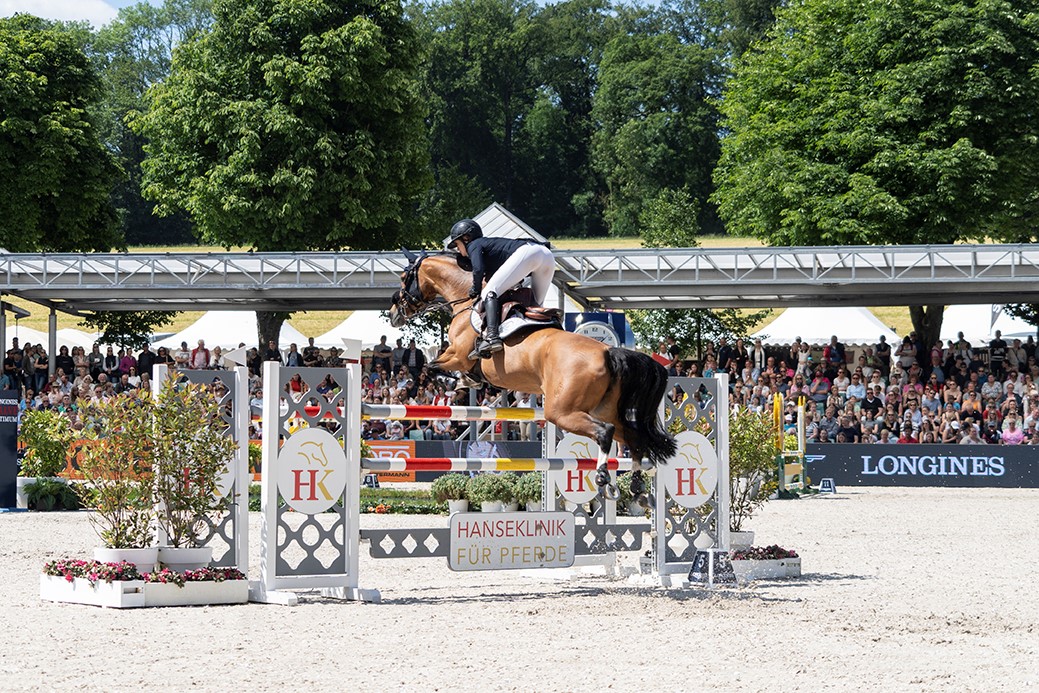Who hasn’t been there? You come to the stable to ride, pick up the horse from the paddock, but something is wrong – the horse has injured itself … Whether in the stable, in the paddock or on rides in the countryside, accidents and sudden cases of illness can occur at any time. It is therefore important that horse owners are familiar with basic first aid measures so that they can react appropriately in such situations. After all, every rider should be able to provide help in an emergency. The Hanse Equine Hospital (Hanseklinik für Pferde) offers courses in which the basics of first aid for horses are taught.
Well-prepared in an emergency
The basics of first aid for horses include quickly assessing the animal’s condition, treating wounds correctly, stabilising injuries and recognising potentially life-threatening situations. If it is only a superficial injury, a trip to the vet or a clinic is not necessary in most cases. In such a case, a well-stocked first-aid kit is sufficient to provide adequate wound care. The stable first-aid kit should be put together carefully, taking into account the specific needs of each horse.
The right action in such situations can not only minimise the animal’s suffering, but also save lives in an emergency. “The correct and timely application of first aid can make a huge difference in the course of an illness, both in the case of open injuries as well as foreign bodies, colic or throat blockages,” says Jennifer Bormann, vet at the Hanse Equine Hospital (Hanseklinik für Pferde).
Abrasion, fracture or nail kick?
Injuries to horses can cover a broad spectrum – from superficial abrasions to deeper cuts or even broken bones. In such moments, it is crucial to act quickly and prudently. An initial assessment of the injury is essential to decide whether immediate veterinary treatment is necessary. In the case of obviously serious injuries involving structures such as joints, tendons or bones, as well as extremely bleeding wounds or signs of shock, a vet should be contacted immediately. “A bleeding wound is not always an immediate emergency. But there are also wounds that don’t bleed at all and are an immediate emergency – for example joint openings,” says Jennifer Bormann.
For the initial treatment of minor wounds, it is important to clean and disinfect the wound carefully to prevent infection. The use of clean lukewarm water and a medical soap can be helpful here. Disposable gloves should always be worn to prevent contamination of the wound. The wound should then be covered with a sterile dressing to keep it clean and prevent further contamination.
In the case of injuries such as a nail bite, it always depends on where the foreign body is located and which structures are affected. If the foreign body drills further into the wound as a result of walking, for example, the entry point should ideally be documented for the vet and an attempt made to remove it without causing further damage. Then apply a bandage to prevent further contamination. A pressure bandage may also be useful if there is heavy bleeding. If the object cannot penetrate any further, it can be carefully bandaged without applying pressure and wait for arrival at the clinic/vet.
First aid when every second counts
The Hanse Equine Hospital (Hanseklinik für Pferde) regularly organizes first aid courses for horse owners and stable communities in order to further improve skills in dealing with emergency situations. These courses aim to impart not only theoretical knowledge, but also practical skills to be able to act confidently and correctly in any situation. From applying a pressure bandage to correctly measuring temperature and breathing, participants can learn and apply first aid measures live and under professional supervision.




